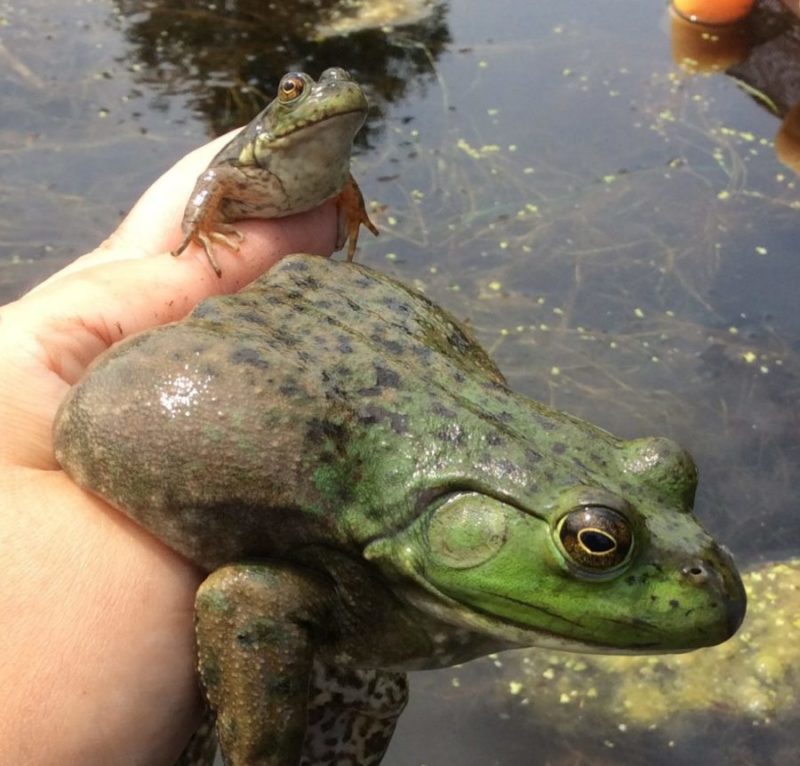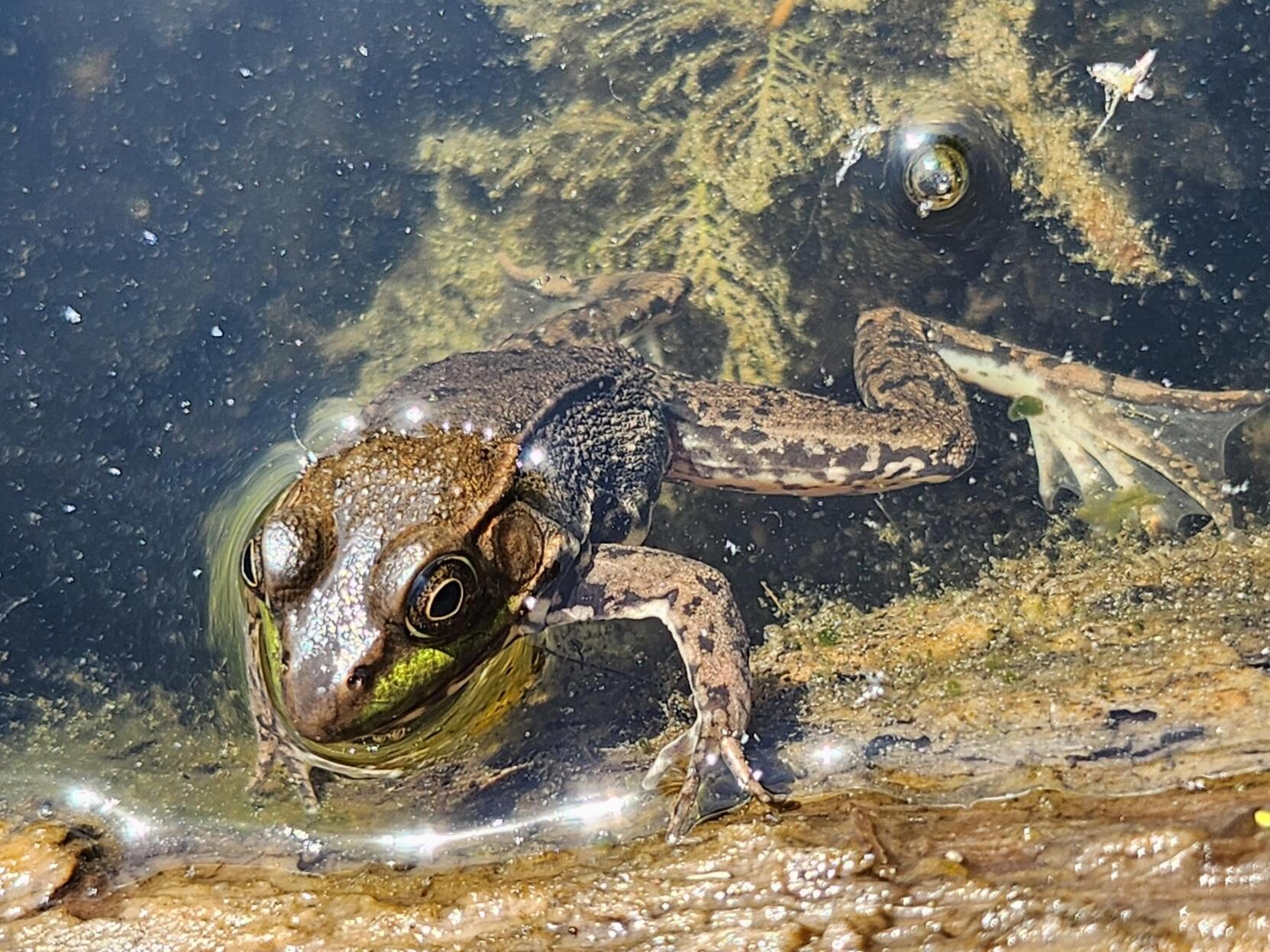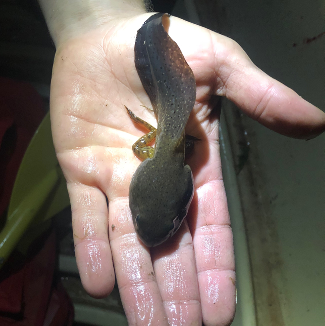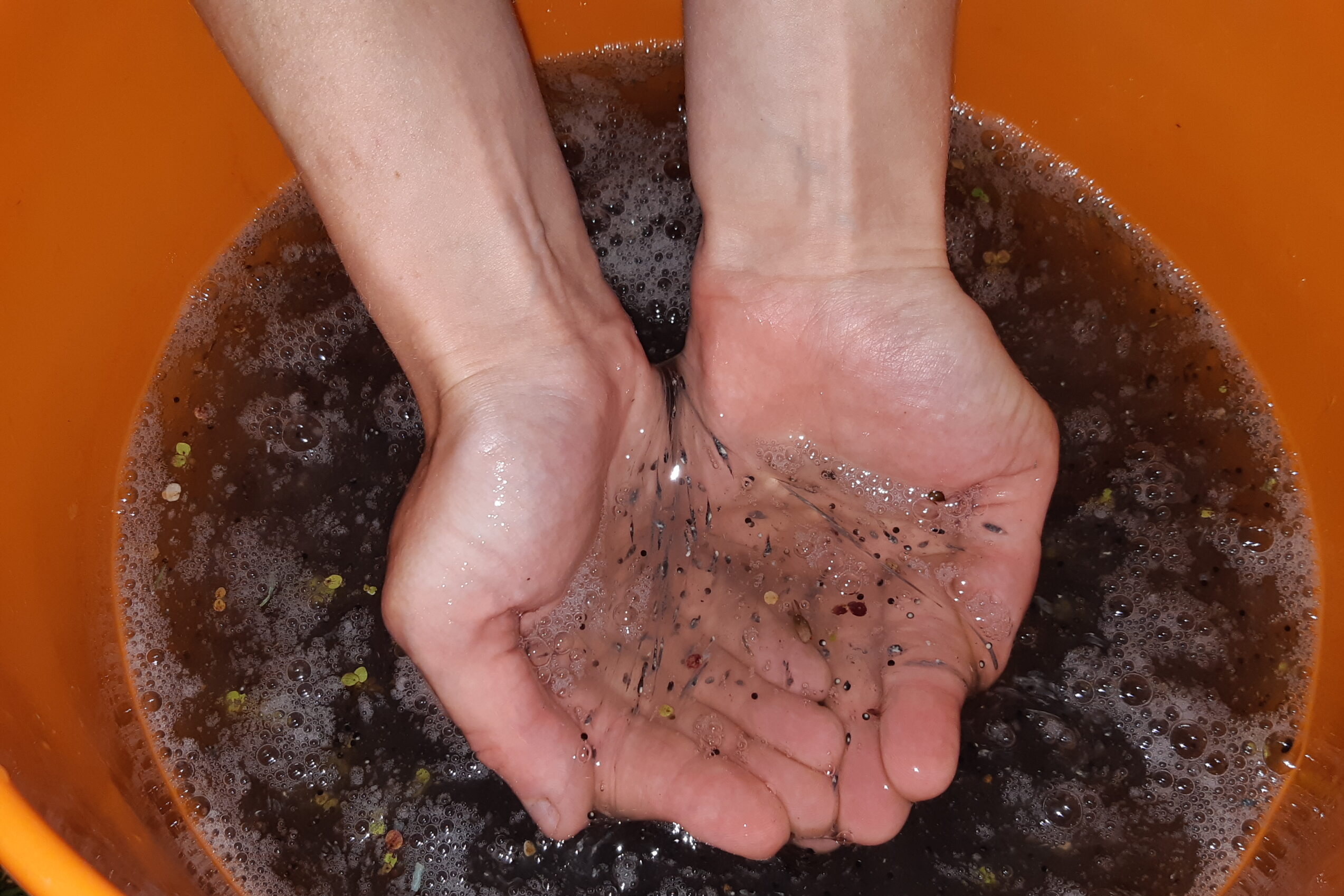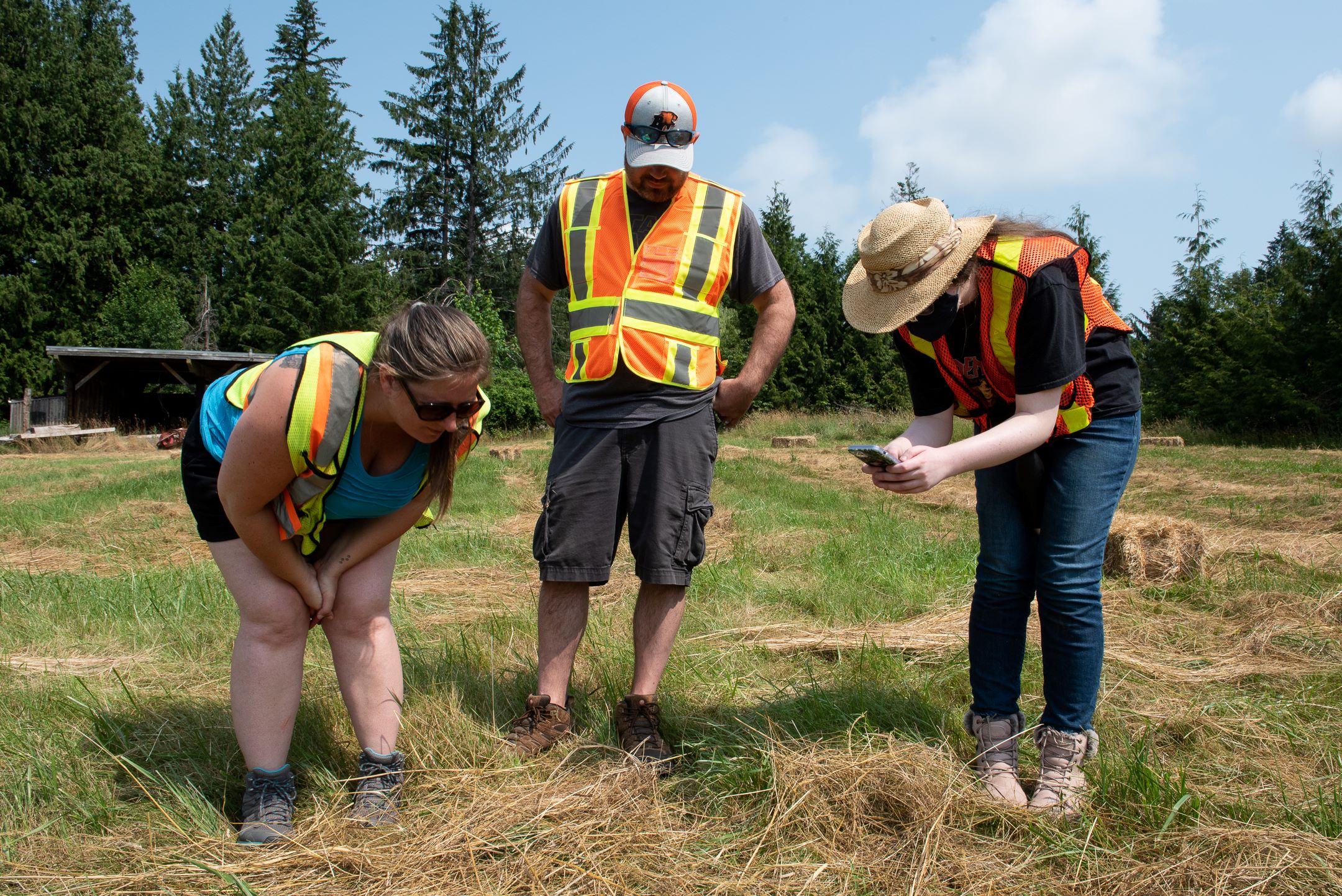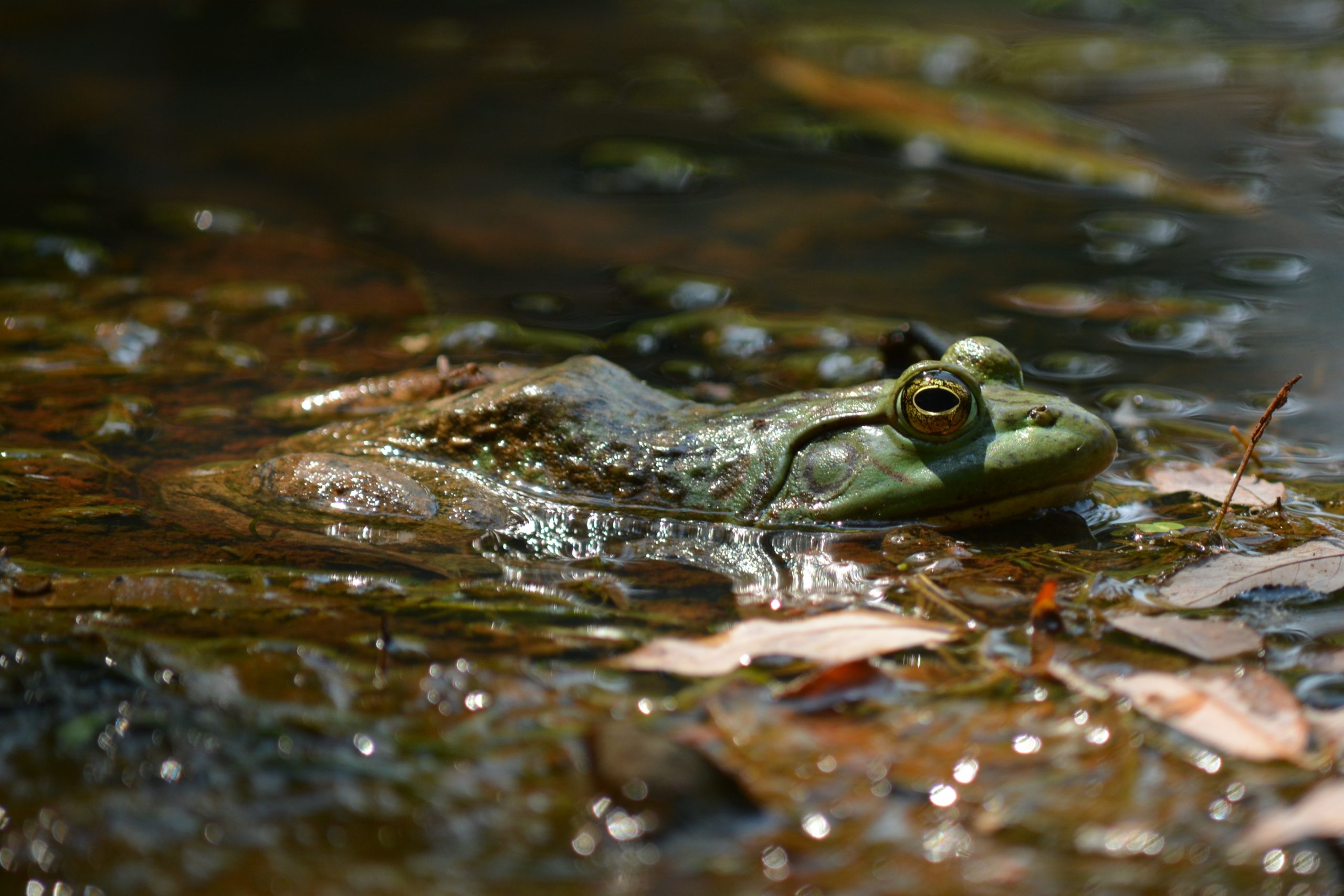Quick ID For Invasive Frogs
Call:
Frog songs in the summer will almost always belong to invasive frogs. Scroll down to find what these frogs sound like to identify what you hear.
Eardrum:
The tympanum is a large circular ear drum behind the frog’s eye. It is large and very visible on invasive frogs.
Tadpoles:
Invasive frogs will over winter as tadpoles. If you are seeing them in ponds during the fall and winter, they belong to non native species.
These are some of the features that you can use to quickly get an idea of what frog you see in the Fraser Valley. For more detailed information, continue on this page and check out our ID guides at the bottom.
Never harm, transport, relocate or capture any frogs or tadpoles without consulting an expert.
